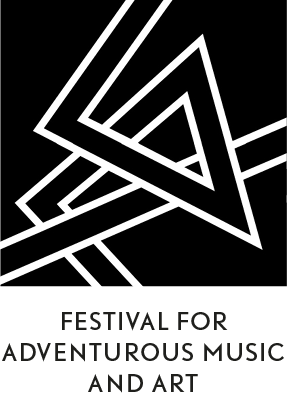Dick Raaijmakers
[NL]

Composer, theorist and theatre producer Dick Raaijmakers (1930-2013) pioneered Dutch electronic/tape music in the 1950s. He founded the ArtScience Interfaculty in The Hague, was a noted essayist and author on sound, and was widely honoured for his contributions to music, theatre and the visual arts.
Raaijmakers was an early adopter of electronic technology for music production, and his work in the field expanded far beyond the laboratory to include film, theatre, installations and visual art, and literature. His work cuts a cross section accross a wide variety of genres and styles, varying from sound animations for films to extremely abstract pulse structures, from action music to infinite voice patterns, from electro-acoustic tableaux vivants to extracts of music theatre. He composed for orchestras, percussion ensembles, educational and industrial films, background environments, and unorthodox “musical” objects such as tractors and bicycles. He wrote extensively on new concepts and applications as they related to sound. One of his most important books was The Method (1985), in which he described how motion, cause and effect, and their perception are interrelated.
Raaijmakers studied piano at the Royal Conservatoire (The Hague), and from 1954 to 1960 he worked in the field of electroacoustic research at Royal Philips Electronics (Philips Physics Laboratory or NatLab) in Eindhoven, first as an apprentice in applied electronics and later as an assistant in the burgeoning electroacoustic laboratory with composers such as Henk Badins, Tom Dissevelt, and Ton de Leeuw. There, using the alias Kid Baltan, he and Dissevelt produced popular electronic music under the name Electrosoniks, which turned out to be the first such attempts anywhere in the world. Raaijmakers enjoyed wider success in October 1957 when, under the Kid Baltan moniker with Dissevelt, he released “Song of the Second Moon”. They went on to produce other short “popular” electroacoustic works such as “Night Train Blues” (for three Ondes-Martenots and piano), “Electronic Boogie Woogie”, and “Colonel Bogey's March”.
From 1960 to 1962 Raaijmakers worked at the University of Utrecht as a member of the scientific staff. From 1963 to 1966 he worked in his own studio for electronic music in The Hague with Jan Boerman. Then, from 1966 until his retirement in 1995, he taught theatre and electronic and contemporary music at the Royal Conservatoire (The Hague). Raaijmakers passed away only recently, on 3 September 2013.

